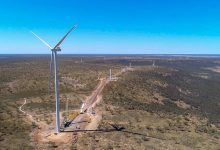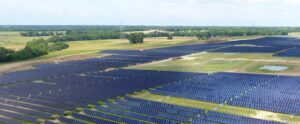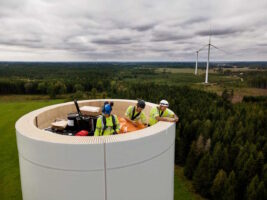The proponents of the proposed $1.5 billion Copperstring 2.0 transmission link from Townsville to Mt Isa in north Queensland have pointed to the huge minerals resources that could be unlocked if the ambitious project goes ahead.
According to a new study commissioned by Copperstring 2.0, there is some $640 million of economic value from minerals reserves that could be unlocked by the new transmission line, which would traverse more than 1,100kms from the coast to the mining town of Mt Isa, and also unlock significant amounts of wind and solar resources along the way.
“These interim findings confirm the show that if the CopperString 2.0 transmission line is built it will be transformational and will deliver lower energy costs and unlock significant potential for resources investment and jobs in the North West Minerals Province (NWMP),” Copperstring 2.0 founder and executive chairman Joe O’Brien said in a statement.
The findings of the report were presented to the North Queensland Sustainable Resources Reference Group (RRG), chaired by former state mining minister Tony McGrady AM in Townsville on Wednesday.
“The challenge for Townsville and the NWMP is that at present input costs render much of this opportunity uncompetitive and unlikely to be developed, meaning the economic benefits and employment the region enjoys from the minerals sector is likely to decrease significantly and quickly,” a statement said.
There was no mention in the press release about the cheap wind and solar resources that would be unlocked by the project and which would deliver the cheaper energy, particularly to Mt Isa. That’s possibly because of the intense politics around energy in north Queensland, where there is a push by conservative MPs to underwrite a new coal fired generator.
That coal project, for instance, would be a moot point if Copperstring 2.0 were to go ahead.
O’Brien told RenewEconomy that the presence of significant wind and solar resources along the proposed transmission line was already well known, and would slash the cost of electricity by up to half in Mt Isa, an isolated grid where large consumers had to pay big money for capacity as well as supply.
An original proposal for Copperstring was rejected years ago by the then state government, which took advice from Swiss-based mining giant Xstrata and chose instead a new gas generator for Mt Isa, rather than the new link (Copperstring 1.0) and the wind and solar resources it could unlock.
That decision has proved disastrous, because the soaring price of gas power has now placed the future of Mt Isa and its copper smelter at risk, along with the related copper refinery in Townsville, and hundreds of jobs.
O’Brien says the new minerals province included “traditional” ores such as copper, lead and zinc, along with some oil ver and gold, but also metals for the new “clean economy” such as cobalt and vanadium.
He also pointed to the huge and growing demand from international customers and investors for cheap and low emissions products that could be delivered with the help of renewables. “Emissions intensity is becoming increasingly important for both commodity traders and capital markets,” he told RenewEconomy.
“The work we’ve done certainly highlight the enormous minerals opportunity in the north west – and if you don’t have competitive energy costs there is no chance of developing it without it.
“I don’t think Australians appreciate the value that capital markets put on supply chain emissions intensity. North Queensland should be so well placed to provide this.”
O’Brien estimates that the new province would have demand of around three terawatt hours, which in turn would create opportunities, and local load, for the region’s significant renewable energy resources – wind from Kennedy north to Kidston, and solar in the far west, which had the advantage of providing power at peak times in the east.
“That could address some of the major system constraints in the area,” he said.
Billionaire Mike Cannon-Brookes is co-funding a feasibility study into the Sun Cable project in the Northern Territory, which is looking at building the world’s biggest solar farm of around 10GW – partly to provide power to international customers such as Singapore, but also potentially to link into the National Electricity Market via centres such as Mt Isa, which is currently an isolated grid.
“Northern Queensland and it’s immensely valuable minerals sector between Townsville and Mount Isa stands at a cross-roads between a sustainable and prosperous future combining our new economy minerals with our traditional exports products, and a quickly contracting regional economy where value-adding is a thing of the past,” the statement said.
“With the right infrastructure investment and policy settings the sustainable and prosperous outcome is ours for the taking.
“CopperString 2.0 is a very exciting project because it will remove that unfair barrier on development between Townsville and Mount Isa, isolation from the national grid. The NWMP minerals mining and processing industry will become more globally competitive, and that equals more jobs and prosperity across our region, something we need now more than ever.”
O’Brien hopes that if approvals, and funding, can be found, construction could start in 2021.










